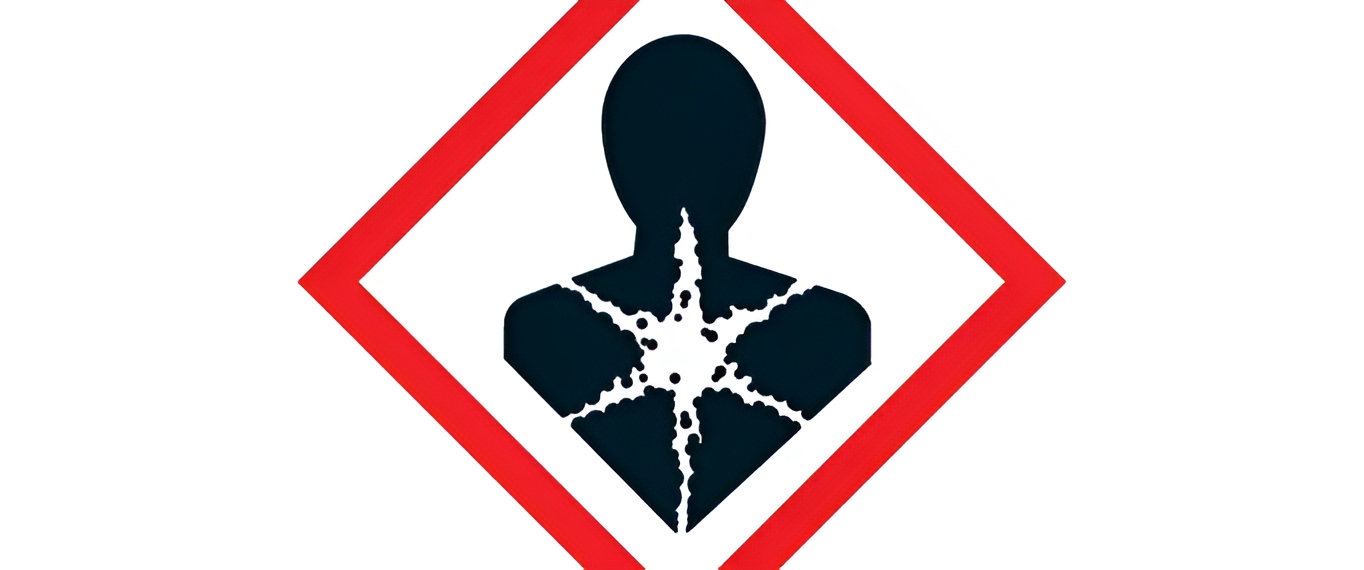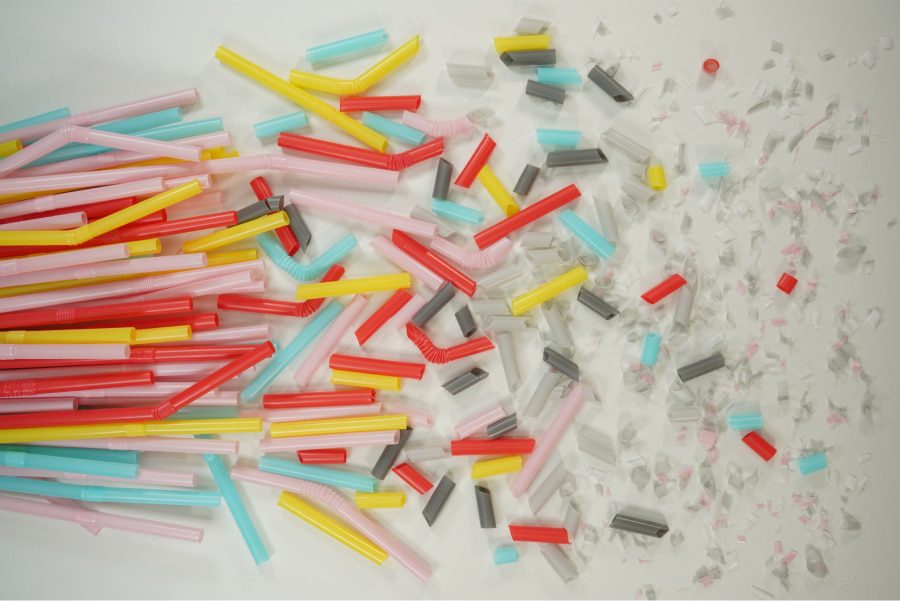The critical role of UK cosmetics formula checks
The first step in selling your product in the UK is a Formula Check. This process is particularly important because it ensures that your product is safe for consumers and compliant with UK cosmetic regulations.
The Safety Assessor will prepare the Formula Checks UK cosmetics must go through, detailing the formula with INCI ingredient names, along with any restrictions, CLP classification, MoS calculation, impurity content, and suitability for cosmetic use. The report will also indicate whether the formula is compliant or non-compliant, and provide explanations on how to achieve full compliance if necessary.
Once the formula is deemed compliant, we list the INCI names of the ingredients in decreasing order of concentration. This is the correct order in which the ingredients must appear on both the packaging and inner labels. The report will also offer a conclusion on any missing or required additional documents to proceed, outline the cosmetics testing UK needs based on the formula’s properties, and, if necessary, provide recommendations for reformulation.
Since the United Kingdom’s exit from the European Union in 2021, the UK has established its own cosmetic regulations. While most ingredients have similar restrictions under both regulations, there are notable exceptions. The maximum concentrations for some restricted ingredients may differ between the two regulations, and some ingredients banned in the EU are only restricted in the UK. Please read our article on the UK cosmetic product registration process.
It is important not to confuse the Formula Check with the CPSR. Conducting a proper Formula Check is the first step toward completing a thorough CPSR. Our article on the Cosmetic Product Safety Report has more detailed information.
Preparing for a comprehensive UK cosmetics formula check: Necessary documentation and preliminary steps

When the Safety Assessor conducts a UK cosmetics Formula Check, the following documents are required:
- Normal and reasonably foreseeable use: We need to know the function of the finished cosmetic product and its intended market (adults, children, etc.). This information allows us to calculate the product’s exposure.
- Quantitative and qualitative composition of the cosmetic product: A breakdown of the formula is needed, including the trade names of the raw materials and their manufacturers, the INCI names of the ingredients in those raw materials, their concentrations, and the concentration of the raw materials used in the finished cosmetic product.
- Material Safety Data Sheet (MSDS), Certificate of Analysis (COA), and Non-Animal Testing (NAT) statement for each raw material: These documents provide details on the composition of each raw material, including impurities and traces. If the composition is not clearly stated, we will require a breakdown composition where the concentration of all ingredients (with their INCI names) is provided, totaling 100%.
- GMP certificate: The certificate must comply with ISO 22716 and be valid. If it has expired, we will request a new one immediately.
The Formula Checks UK cosmetics undergo are specific to each cosmetic product, so we may require additional documents depending on your product or raw materials.
- Allergen report: if the raw material is a fragrance, essential oil, or a natural extract, we will need an allergen report according to the Commission Regulation (EU) 2023/1545, which will specify the allergens present in the raw material and their percentage.
- IFRA certificate: the same case as the above, we will request that the IFRA certificate is in the latest amendment, currently the 51st.
- Purity statement: we may require a purity statement if your raw material is a colourant, and the impurities and traces aren’t clearly specified in the certificate of analysis.
- Origin statement: this document will be needed if you want to claim your product as Vegan, Natural or Organic (or certifications that testify these claims).
- Microplastic free statement: if we suspect that one of the ingredients may be microplastic, we will request a statement that clarifies it.
Although other documents may not be required at this stage, we take note of any missing documents needed for the CPSR preparation.
Additionally, we ensure that the raw material documents are consistent and accurate. We verify that all documents for each raw material have the same product name and come from the same manufacturer. We also check that documents, such as allergen reports, are up to date and that certificates of analysis are properly signed.
A particular requirement for the UK cosmetics formula check is that all raw material and finished product documents must be in English.
Conducting effective formula checks in the UK: Step-by-step process for ensuring compliance

Step1: Formula and ingredients review
The Safety Assessor reviews the formula you have provided, ensuring that the total amount of the ingredients equals 100%. Next, a toxicology assessment of each ingredient is conducted. The first step in this process is to confirm the INCI (International Nomenclature of Cosmetic Ingredients) name for each ingredient in the cosmetic product. Since the INCI list will appear on your labels, it is crucial that we identify the correct INCI name for each ingredient.
Sometimes, the names provided in the formula do not accurately reflect the actual ingredient present in the product. It might be a completely different ingredient or may require further specification, such as in the case of plant extracts—whether it is a flower, fruit, root, or leaf extract. To identify the correct ingredient, we thoroughly examine the raw material documents. Often, the composition of the raw material is detailed in the MSDS, but sometimes this information is insufficient. In such cases, we request a breakdown composition statement if it has not already been provided.
During the document verification process, we occasionally discover that these raw materials contain additional ingredients not listed in the formula. Next, we verify whether the ingredients are restricted or prohibited by the Cosmetic Regulation.
If an ingredient is restricted, it will be listed in Annex III of the cosmetic regulation, where we can find the specific details of the restrictions:
- Maximum concentration allowed, and the details of these concentrations (it may vary in function of the final product function)
- Product type, body parts: Some substances may only be allowed in leave-on or rinse-off products, or may be intended for professional use only.
- Maximum concentration in ready-for-use preparation
- Other conditions
- Any wording of conditions of use or warnings that are required to appear in the label
For a substance in a cosmetic product to be permitted as a colourant, preservative, or UV filter, it must be listed in the corresponding Annexes IV, V, or VI, and used in compliance with any conditions specified in the relevant Annex.
If an ingredient is prohibited, it will be found in Annex II of the Regulation.
Cosmetic products must not contain substances classified as Category 2, or Category 1A or 1B CMR substances under Regulation (EC) No 1272/2008 on classification, labelling, and packaging of substances and mixtures, as it applies in Great Britain unless they are listed in one of the Annexes that permit their use (and have been deemed safe for use in cosmetics). Specific labelling to prevent product misuse must be provided, taking into account potential risks linked to hazardous substances and exposure routes.
If the formula contains nanomaterials that are not colourants, preservatives, or UV filters listed in Annexes III, IV, V, or VI (and are not used in accordance with the conditions outlined in the relevant Annex), the Responsible Person must electronically notify the authorities about the product containing nanomaterials at least six months before it is placed on the market.
Additionally, if a competent authority has concerns about the safety of a nanomaterial, they may request that the Responsible Person submit information regarding the nanomaterial used and the reasonably foreseeable exposure conditions. This is one of the key reasons why Formula Checks are critically important.
Step 2: Impurities and traces
Once the ingredient list has been confirmed, we return to the raw material documents to check for any impurities. These impurities are typically listed in the Certificate of Analysis, and additional information may sometimes be found in the Technical Data Sheet. We ensure that impurities, such as heavy metals, are within the limits set by regulations. Additionally, we verify that the total amount of impurities remains below the accepted thresholds.
Step 3: Exposure to substances and calculation of the Margin of Safety (MoS)
Finally, the toxicological profile of the ingredients is assessed, with particular attention to local toxicity effects such as skin and eye irritation. Photo-induced toxicity is also evaluated, especially for products that may absorb UV radiation. The Safety Assessor conducts thorough data research to establish the toxicological profile of each ingredient, referencing sources like SCCS opinions, CIR opinions, industry guidelines, other regulations (REACH, CLP), and various scientific publications.
Once the toxicological profile of an ingredient has been completed and it is deemed safe, the Margin of Safety (MoS) is calculated. The MoS confirms that the ingredient in the finished cosmetic product is within acceptable limits for use and safe for human health. This is based on several factors, including the area of exposure, product quantity, duration of exposure, and the target population. The calculations and factor determinations outlined in SCCS guidelines form the foundation of the Formula Check report.
This committee plays a crucial role in assisting the EU Commission by offering timely opinions that help in approving, regulating, or prohibiting substances, ensuring the protection of consumer safety. For further information see our Guide to the SCCS.
The UK has the SAG-CS, or Scientific Advisory Group on Chemical Safety of Non-Food and Non-Medicinal Consumer Products, which evaluates and provides guidance on chemical and biological risks to human health. SAG-CS is a scientific advisory body commissioned by the Office for Product Safety and Standards (OPSS).
The group’s mission is to offer scientific advice and conduct risk assessments for the OPSS, focusing on public health and consumer safety. Its remit primarily covers chemical and biological risks associated with non-food and non-medicinal consumer products, such as cosmetics and their ingredients. This includes nanomaterials, hair dyes, preservatives, UV filters, colourants, and fragrance ingredients, as well as other consumer goods like toys and textiles.
Shortly after its formation, the SAG-CS adopted the Scientific Committee for Consumer Safety (SCCS) Notes of Guidance to streamline the risk assessment process. In these notes, the SCCS utilises a default adult body weight of 60 kg in certain scenarios to calculate product exposure.
However, in April 2023, members of the SAG-CS proposed revising this default body weight from 60 kg to 70 kg, arguing that 70 kg would better reflect the average adult body weight in the United Kingdom. As a result, some of the SAG-CS’s opinions on ingredient concentration limits differ from those of the SCCS.
An example of this is discussed in our article on the New restrictions on the use of BHT in the UK.

This difference in the default body weight is also why the calculation of the Margin of Safety (MoS) varies between the EU and the UK. If you want your formula to be considered compliant with UK regulations, the Safety Assessor must account for this distinction when calculating the MoS.
Step 4: Establishing the Necessary Laboratory Tests / The Importance of Testing in Formula Validation
During the formula check, we determine which cosmetic products testing UK require for preparing the Cosmetic Product Safety Report (CPSR) and the Product Information File (PIF). A Stability/Compatibility test is always requested, but depending on the specific characteristics of the formula, a Challenge test may also be necessary. For products such as sunscreens, additional UVA and UVB tests will be required to ensure safety and efficacy.
Step 5: Special Claims
During the UK cosmetics formula check, the Safety Assessor can begin verifying claims such as Vegan, Natural, or Organic. Some claims may also involve specific concentrations of ingredients (e.g., “contains 80% Hyaluronic Acid”), and we verify that the stated amounts are accurate.
This is why we require full documentation for all raw materials during the formula check. The Safety Assessor must review all available information to validate claims. For example, if you wish to label your product as Vegan, the assessor will review the documentation for every ingredient to ensure it meets vegan standards. If any raw material is found to be non-compliant, you will be informed so that the necessary substitutions can be made.
Who is responsible for preparing a UK cosmetics Formula Check?

Only a Safety Assessor is accredited to perform the UK cosmetics formula check, as well as prepare the Cosmetic Product Safety Report (CPSR) and the Product Information File (PIF). It is the responsibility of the “Responsible Person” to select a qualified specialist, known as the Cosmetic Product Safety Evaluator, to carry out these tasks. Ensuring that the Safety Assessor has the appropriate qualifications and experience is crucial to maintaining high standards and compliance.
In addition, the Responsible Person must gather all necessary documentation from manufacturers and suppliers and provide it to the Evaluator. This step is essential to ensure that the process is conducted professionally and in full accordance with regulatory requirements.
The reason only Safety Assessors are qualified for this role is their experience and specialised knowledge, allowing them to make precise and specific considerations for each formula and cosmetic product.
In recent years, there has been a rise in software using Artificial Intelligence to perform formula checks, and in some cases, even prepare the CPSR and PIF. But can these programs guarantee compliance in the UK?
These software solutions lack the precision of a human Safety Assessor. They do not apply the same level of scrutiny when researching ingredients, often pulling data from other markets, such as the USA or Australia. However, the UK and EU have the strictest cosmetic regulations in the world, requiring a far more cautious approach when evaluating ingredient toxicology.
Software might provide general insights into ingredients but cannot examine raw materials documentation—an essential step in identifying impurities and traces. A formula that appears compliant at first glance may be deemed unsafe once the documentation reveals excessively high levels of heavy metals, making the product unsuitable under any circumstances.
Furthermore, these software programs are often outdated, as cosmetic regulations and expert opinions on ingredients are continually evolving. Safety Assessors, on the other hand, must stay up to date with these changes and incorporate them into their evaluations to ensure optimal outcomes.
If, during the UK cosmetics formula check or later while analysing the data for the CPSR, the Safety Assessor identifies a need for product reformulation, they will inform the client of the reasons and recommend necessary adjustments to meet safety and regulatory standards, ensuring the product remains compliant.
Such modifications may include altering ingredient concentrations, replacing or removing ingredients, adding new ones, revising usage instructions (for example, reducing the area of exposure), or adding warnings (such as limiting use for children under 3 years old).
Overcoming common formula check challenges: Identifying and addressing potential issues
It is worth noting some common errors that can occur when discussing the Formula check:
• The Formula Check report is based on ingredient formula composition only (and not reconstructed from raw material breakdown).
• Impurities are not identified correctly.
• Important documents on raw materials are missing (for example the allergen report of a fragrance).
• Toxicological data on individual ingredients are absent or extremely limited.
• The exposure to the cosmetic product is too optimistic or even completely wrong.
• Only systemic toxicity is quantitatively evaluated (not always well) and the other toxicological endpoints, such as skin sensitization, skin irritation, etc., have not been considered.
• The Security Assessor does not have the right qualifications.
The formula checks UK cosmetic products need are the initial stage of the products’ registration process. If any issues with the formula are identified at this point, we recommend that the client reformulates the product as soon as possible. Addressing these problems early allows more time to obtain new documentation, conduct additional tests, and update product labels.
How often should the report be updated?
The frequency of updating the report is not explicitly specified in the UK Cosmetics Regulation. However, the regulation states that the cosmetic product safety report should be kept current in light of any additional relevant information that emerges after the product has been placed on the market.
Unless there have been changes to the product’s composition, such as introducing a new raw material from a different manufacturer, altering concentrations, or removing an ingredient (like a fragrance), there is no need to generate a new formula check report.
At Taobé Consulting, we offer a Regulatory Surveillance service, where we monitor daily updates on new ingredient restrictions or prohibitions that may impact your product. If a new law affecting your cosmetic formula is published, we immediately conduct an Impact Assessment to determine whether it applies to your product. If so, we promptly contact you to advise on the necessary steps to ensure your product remains compliant with UK regulations.
In summary, while regulations don’t set a specific time limit, it’s essential to keep the Safety Assessment up to date in response to product changes, legal requirements, and new safety information.
Would you like to stay informed on this topic or learn how your cosmetic product can meet Formula Checks UK Cosmetics compliance standards?
Let us know, and we’d be happy to assist you!



